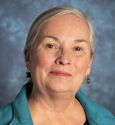
Donna L. Wagner, PhD Dean College of Health and Social Services, New Mexico State University
The 2015 “Caregiving in the US” Survey recently released by the National Alliance for Caregiving and AARP is the latest in a series of caregiver surveys that began in 1997; preceded by an 1987 survey conducted by AARP and Travelers Insurance. These “snapshots” of caregiving are instructive to policy makers, advocates, researchers and practitioners. Although the sampling approaches in the surveys vary making comparisons over time difficult, it is enlightening to see how caregiving in the U.S. has changed between 1987 and 2015.
More caregivers report they are working in the 2015 survey than in any of the previous surveys; a finding that is, by the way, consistent with other studies of family caregivers. And, for the first time, the survey asked about the provision of complicated medical tasks by family caregivers – more than half of the respondents (54%) reported they were or had been responsible for medical tasks and only 14% reported that they had been trained in that task.
Caregivers are, on average, older than in the past. In 1987, only 2% of the caregivers were over the age of 65; in 2015 nearly one in five were that age (19%). The idea that working and aging are two factors in the lives of family caregivers is not a surprising trend. Women are more likely than men to provide care and the increase in older women who work and remain in the workplace over the next decade is pretty amazing –more than half (56.6%) of women between age 60 and 64 and 27% of women between 65 and 74 are expected to be in the workforce by 2018.
Times have changed and so has the life of the caregiver since that first survey 28 years ago. Over the nearly three decades since the first caregiving survey was conducted, there has been an increased focus on home and community based services and on the value of remaining “independent” in the community. While philosophically this focus respects the independence and autonomy of older adults, the reality is that for many, this “independence” is possible only because of family assistance.
The first workplace eldercare initiatives were started in the 1980’s in response to the caregiving surveys and an awareness of the difficulties faced by caregivers. Employers have been providing programs and benefits to employees with caregiving responsibilities since. However, according to the Society for Human Resources data, there has been a steady decline in investment in these benefits and programs. Between 2008 when 20% of the employers surveyed were providing eldercare referral and 2014, when the current survey was being fielded, the percentage of employers providing this benefit had dropped to 5%.
Nonetheless, there are some strong programs that have withstood the test of time and are likely to provide substantial help and assistance in the future.
- Fannie Mae’s independent geriatric care manager program helps employees with caregiving strategies and support. A valued program that has stood the test of time since it began in 1999, it is a model that has not been replicated.
- Emory University’s recent planning for an inclusive approach to a system-wide program designed to address work-family issues is slowly coming on line and should result in better support for employees and some interesting lessons for other employers.
But, is it the role of employers to provide support services for family caregivers? Many employees have already “voted with their feet” on that topic by not using programs or benefits that are available to them. With the exception of Fannie Mae’s program, utilization rates of eldercare programs are in the single digits.
The demographics of the future includes a growing number of oldest-old Americans, many in the current generation of younger workers who “forgot to have children,” and a generation of workers who like their jobs or who can’t afford to leave the workforce. This future scenario is beyond one sector’s efforts to address and calls for some thoughtful problem solving by us all.
Author
Donna L. Wagner, PhD
Dean
College of Health and Social Services, New Mexico State University
Email: dlwagner@ad.nmsu.edu

